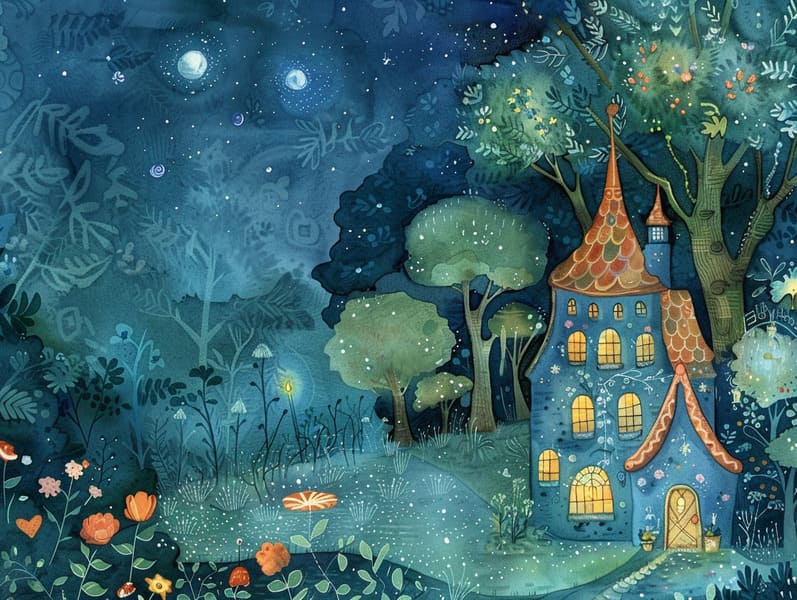The Genesis of Children's Fairy Tales with Their Steadfast Elegance.
The Genesis of Children's Fairy Tales with Their Steadfast Elegance.
Blog Article

Vintage fairy tales have long histories. These tales have been told from one generation to the next well before they were ever written down. They sprang from a variety of backgrounds, including American traditions. They were initially narrated among mature audiences, often carrying themes and messages relevant to the societal norms and beliefs of the time.
The Grimm brothers, Jacob and Wilhelm, were among the first to assemble many of these beloved fairy tales. Their anthology, "Grimm's Fables," included classics like "The True Bride," "The Story of Hansel and Gretel," and "Little Snow White," which have since become pillars in the world of traditional fairy tales. Similarly, the Danish author's enchanting stories, such as "The Sea Maid," and "The Ugly Duckling," have won hearts worldwide, ensuring their place in the pantheon of iconic fairy tales.
Despite their ancient origins, fairy tales remain as impactful as ever, especially as children's bedtime stories. These whimsical stories are now available in numerous formats, including gorgeously illustrated books, charming animations, and web-based fairy tales.
Their persistent charm can be attributed to several fascinating points:
Moral Lessons: Traditional fairy tales often whisper important moral lessons. Narratives like "The Boy Who Cried Wolf" teach the benefit of truthfulness, while "The Tortoise and the Hare" underline the benefits of determination and meekness. These tales offer young ones clear distinctions between good and bad, forming their moral compass in a subtle yet important way.
Compassion and Insight: Timeless fairy tales frequently depict heroines facing challenges and struggles, fostering kids to sympathize with their struggles and rally behind their triumphs. For instance, "Beauty's Beast" conveys the importance of seeing inner beauty to understand the inner self of a soul, developing empathy and knowledge.
Cultural Appreciation: Many traditional fairy tales are interwoven with the cultural contexts from which they bloomed. Understanding these narratives can provide informative snapshots into different historical contexts, enhancing a sense of cultural understanding and knowledge.
Creativity and Imagination: The extraordinary elements in ancient fairy tales—fairy godmothers—kindle children’s imaginative ideas. These fairy tales move readers to extraordinary realms, enhancing imaginative ideas and a sense of astonishment that endures a lifetime.
Classic fairy tales are not only charming but also edifying. They act as bewitching tools in strengthening various thinking and feeling skills in little ones. When classic fairy tales are told out loud, they enhance speaking abilities by offering new words and complex sentence structures. This practice also fosters listening abilities and attention, as the young keep up with the story, keen to see what happens next.
Furthermore, reflecting on the themes and characters of classic fairy tales can sharpen cognitive skills and analytical skills. The young learn to find patterns, forecast, and figure out cause and effect. These reflections also contribute to children express their thoughts and feelings, cultivating their emotional intelligence.
In today’s information age, the existence of free fairy tales online has made these narratives more within reach than ever. Internet resources and mobile apps supply extensive collections of traditional fairy tales that can be looked at or listened to anytime, anywhere. Fairy tales read aloud are particularly sought after, supplying an interactive method for the young to appreciate these enchanting tales. Read-aloud stories and read-out-loud stories take characters and settings to life, often augmented by magical background sounds and tunes that improve the story adventure.
The timeless fascination of classic fairy tales lies in their ability to adjust to current eras while keeping hold of their core messages. Contemporary revisions of these narratives often spotlight more different figures and modern settings, making them pertinent to today’s audience. However, the central morals of fearlessness, charity, and impartiality remain unchanged, continuing to move children of all ages.
Timeless fairy tales also offer a sense of ease and understanding. They highlight a structured narrative with a straightforward beginning, middle, and end, often finishing with the ending of conflicts and the triumph of morality over wickedness. This uniformity can be comforting for kids, affording a sense of solidity in an inconstant world.
Old fairy tales continue to delight and teach new generations, maintaining their loveliness and meaningfulness in modern society. As kids' bedtime tales, they put out a perfect blend of allure and teaching, aiding moral values, empathy, and creativity. The availability get more info of internet fairy tales and the favor of fairy tales read out loud guarantee that these timeless narratives remain within reach to new generations.
By holding onto and recounting these narratives, we continue to exalt the rich tapestry of tales and cultural heritage. Whether you are perusing a vividly illustrated book, viewing a internet library, or listening through an audiobook, the loveliness of Grimm's fairy tales is always within reach. These stories teach us of the endless strength of storytelling and its ability to join us across generations and cultures.
Whether you are browsing a vividly illustrated book, exploring a internet library, or listening to an audiobook, the fascination of bedtime fairy tales is always within reach.
These stories convey of the lasting strength of tales and its ability to join us across epochs and places, casting a charm that enchants and educates alike.